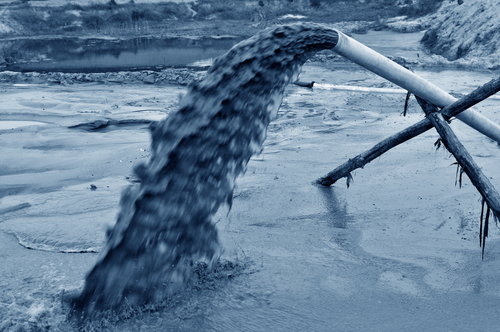Sufficiently Sensitive Testing Methods Rule—The Definitions
 |
One of the most subjective aspects of testing methods is the term “sufficiently sensitive.” To establish what is meant by the term, the Environmental Protection Agency (EPA) has defined it in two sections of the regulations: 40 CFR 122.21(e), which covers application completeness, and in 40 CFR 122.44(i)(I)(iv), which covers monitoring requirements.
The EPA has established that an EPA-approved test method is sufficiently sensitive in different situations using three different criteria. The first two criteria and appropriate usage are:
A. The method minimum level is at or below the level of the applicable water quality criterion or permit limitation for the measured pollutant or pollutant parameter; or
B. In the case of permit applications, the method minimum level is above the applicable water quality criterion, but the amount of the pollutant or pollutant parameter in a facility’s discharge is high enough that the method detects and quantifies the level of the pollutant or pollutant parameter in the discharge.
Join us for our NPDES Electronic Reporting Rule webinar January 13 to learn strategies for complying with the proposed NPDES Electronic reporting requirements. Learn more.
Criteria A and B should be used to address those situations where multiple EPA-approved testing methods exist, but some are more sensitive and can detect substances at lower minimum levels. When this is the case, several additional considerations factor into the assessment.
- The applicant or permitting authority may select a method based on the minimum level published in the EPA-approved method, where available, or by using a derived minimum level;
- When the minimum level is explicitly listed in the EPA-approved method (which is a result of extensive testing in multiple laboratories in a variety of matrices), the applicant may reference the published minimum level when determining whether a method selected to provide data for their permit application is sufficiently sensitive. Note that the EPA “acknowledges that complex matrices exist and provides flexibility and suggestions for ways to mitigate interferences in such instances, often within the published method for a specific pollutant.”
- When the minimum level is not explicitly listed in the EPA-approved method permit, applicants can use either the concentration of the lowest calibration standard in methods that dictate the concentrations of such standards, or as a multiple of the method detection limit (MDL) or similar statistically derived detection limit concept to derive the minimum level. Additional clarification can be found in the final rule at https://www.federalregister.gov/articles/2014/08/19/2014-19265/national-pollutant-discharge-elimination-system-npdes-use-of-sufficiently-sensitive-test-methods-for.
NPDES Electronic Reporting Rule: Best Practices for Complying with Emerging Requirements
The EPA claims the rule will modernize NPDES reporting, saving time and resources for regulated entities and regulatory agencies, better protecting the nation’s waters by improving compliance, and providing the public with access to information that affects their communities. Register now.
The third criterion is:
C. The method has the lowest minimum level of the EPA-approved analytical methods.
The criterion C definition is for cases where none of the EPA-approved methods for a specific pollutant are able to “achieve the minimum levels necessary to assess reasonable potential or to monitor compliance with a permit limit.” This requires that applicants or permitholders use the method with the lowest minimum level of all methods approved by the EPA for the pollutant to meet the “sufficiently sensitive” requirement.
Applicants and permitholders should also note that requirements to use a “sufficiently sensitive” EPA-approved method do not apply where no EPA-approved method exists. When no analytical method is approved under 40 CFR Part 136 or required under 40 CFR Chapter I, Subchapters N or O, and a specific method is not otherwise required by the director, an NPDES applicant may use any suitable method; however, the applicant must provide a description of the method. The EPA also clarifies that the rule affects only chemical specific methods and does not apply to whole effluent toxicity (WET) methods or use.
Whether using an EPA-approved or non-EPA-approved testing method, the EPA also notes that, based on its “understanding of standard practice,” questions about whether any method meets the “sufficiently sensitive” definition should be addressed to the permitting authority, as they have the responsibility for both approving applications and establishing permit conditions, including monitoring and reporting requirements.
